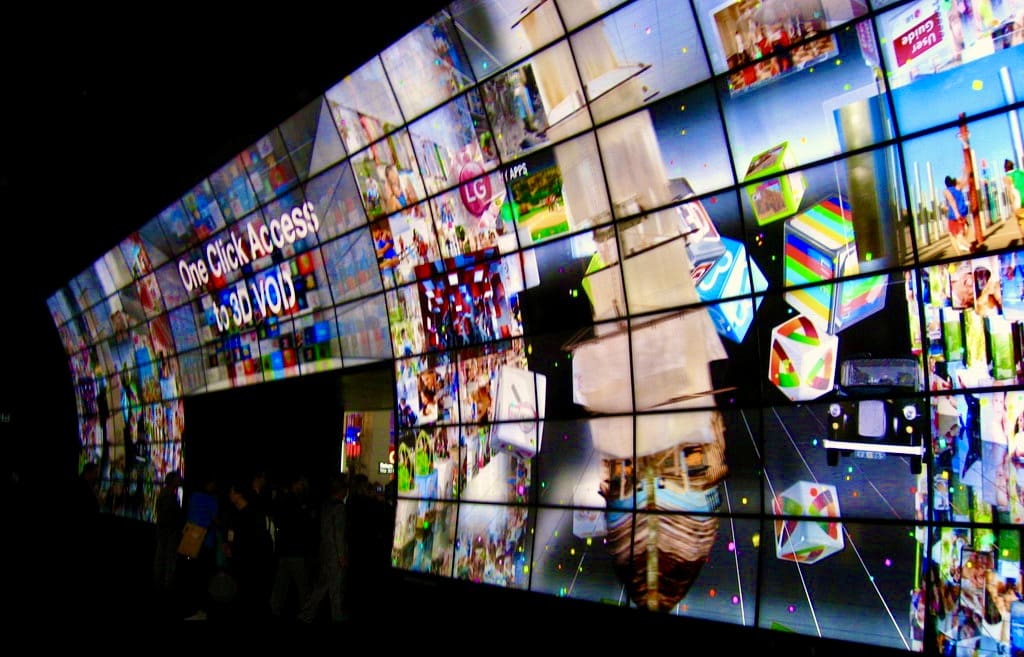What’s the Difference Between LED and OLED?

What is the difference between LED and OLED? We get this question a lot. Here’s what you need to know.
What You Need to Know About Monitor Display Technologies
We have come a long way from the days of CRT (cathode ray tube) displays. Once the most common type of display technology, CRTs worked by firing electrons at a phosphor-coated screen to create an image. However, CRTs have largely been replaced by newer technologies due to their large size and poor energy efficiency.
Go into any electronics store, and you will be blown away by the vast array of video displays available. There are several main monitor display technologies in use today, including the following:
- LCD (Liquid Crystal Display): LCD displays use a backlight to illuminate a layer of liquid crystal cells. These cells control the amount of light that passes through to create the image. LCD displays are popular due to their affordability and energy efficiency.
- LED (Light Emitting Diode): LED displays are a type of LCD display that uses LED lights to illuminate the liquid crystal cells instead of a traditional backlight. This technology provides a wider color gamut and better contrast than traditional LCD displays.
- Plasma: Plasma displays use a gas mixture to create an image. They were once popular due to their high contrast and color accuracy, but they have largely been replaced by OLED and QLED displays.
- OLED (Organic Light Emitting Diode): OLED displays use a layer of organic compounds that emit light when an electric current is passed through them. OLED displays have better contrast, have faster refresh rates, and can be much thinner and more flexible than LCD and LED displays.
- QLED (Quantum Dot Light Emitting Diode): QLED displays use quantum dot technology, which is a type of semiconductor that emits light when an electric current is passed through it. QLED displays offer a wide color gamut, high contrast, and energy efficiency.
LED vs OLED (Organic LED) Displays
Overall, LCD and LED displays are the most common type of display technology due to their affordability and energy efficiency, while OLED and QLED displays are becoming increasingly popular due to their improved color accuracy, contrast, and flexibility.
LED (Light Emitting Diode) and OLED (Organic Light Emitting Diode) are both types of display technologies used in various electronic devices. Here are the main differences between LED and OLED:
- Composition: LED displays use inorganic materials such as gallium arsenide and gallium nitride, while OLED displays use organic materials that contain carbon and hydrogen.
- Lighting: LEDs produce light by passing a current through a semiconductor material, while OLEDs produce light when an electric current is passed through a thin organic layer between two electrodes.
- Power Consumption: OLEDs use less power than LEDs. This is because OLEDs can turn individual pixels on and off, whereas LEDs must light up the entire backlight to display an image.
- Thinness: OLED displays can be much thinner and more flexible than LED displays, making them well-suited for use in devices like smartphones and wearable technology.
- Contrast: OLED displays have a higher contrast ratio than LED displays, which means that they can display deeper blacks and brighter colors.
- Lifespan: The lifespan of an OLED display is generally shorter than that of an LED display. OLEDs can suffer from image burn-in, where a static image is displayed for an extended period, leading to permanent damage to the screen.
LED and OLED in Trade Show Booths
LED walls can transform a trade show booth into a vibrant promotional tool for your brand. LED walls can also be programmed to display picture-in-picture, eliminating the need for a monitor on a stand, which frees up floor space, improves the flow, and makes the space more open and inviting.
LED walls allow you to control your design and visual identity. In place of custom-printed graphics, you can display and change custom content and graphics easily. No more vinyl-printed graphics that take hours to produce, require last-minute changes, and need additional labor to install.
You can even go a step further and set up three LED walls in your booth. Each wall can have its own image or video source, or you can create a seamless, three-sided immersive experience that your audience will long remember.
Reach Out to Rent the LED and OLED Displays You Need
So, LED vs. OLED — which to choose? Overall, OLED displays offer several advantages over LED displays, including better power consumption, thinness, contrast, and flexibility. However, they are also more expensive to produce and have a shorter lifespan.
Still not sure whether you should use LED display or an OLED display? TST can help.
TST is the total show production solution for anyone who hosts, plans, manages, or produces trade shows, conferences, corporate meetings, and nightclub events. To support exhibit builders at NIADA and other big shows, TST provides AV design, setup, staffing, and operation. Our services include audio, video, LED and OLED walls, lighting, staging, computers and laptops, AV gear rentals, and affordable trade show Wi-Fi.
In the events industry, what you know and who you know are everything. We know the Pacific Southwest, Las Vegas, and all of the venues inside and out. We also travel with our clients to support their shows around the country. In an industry where almost anything can go wrong, we make sure everything goes right.

